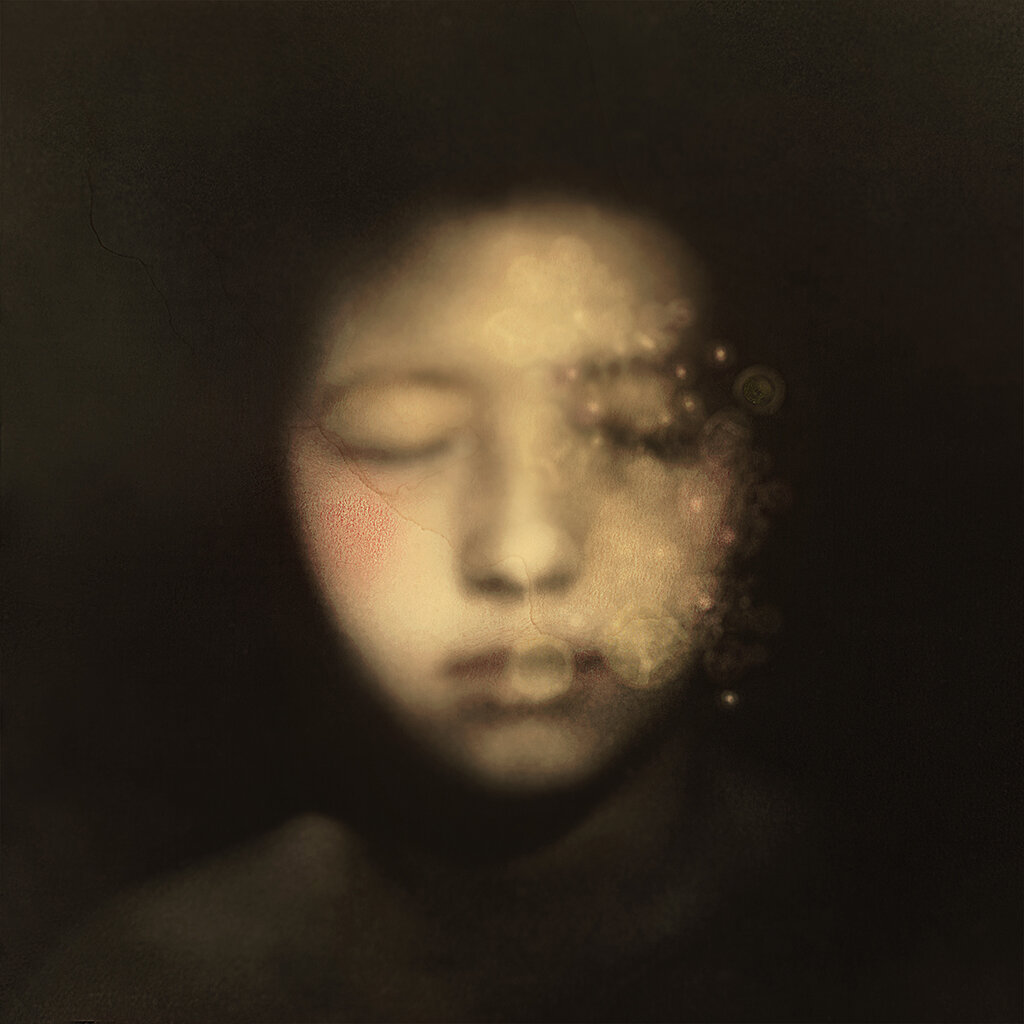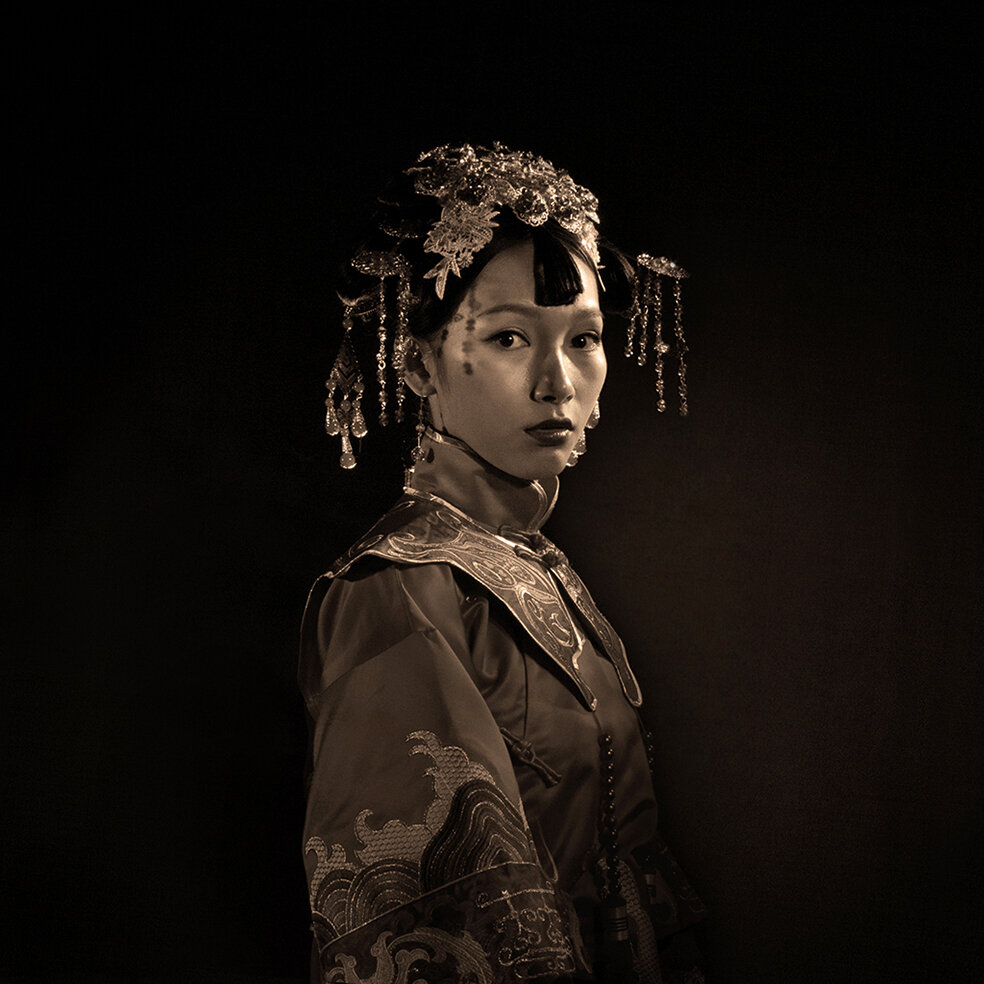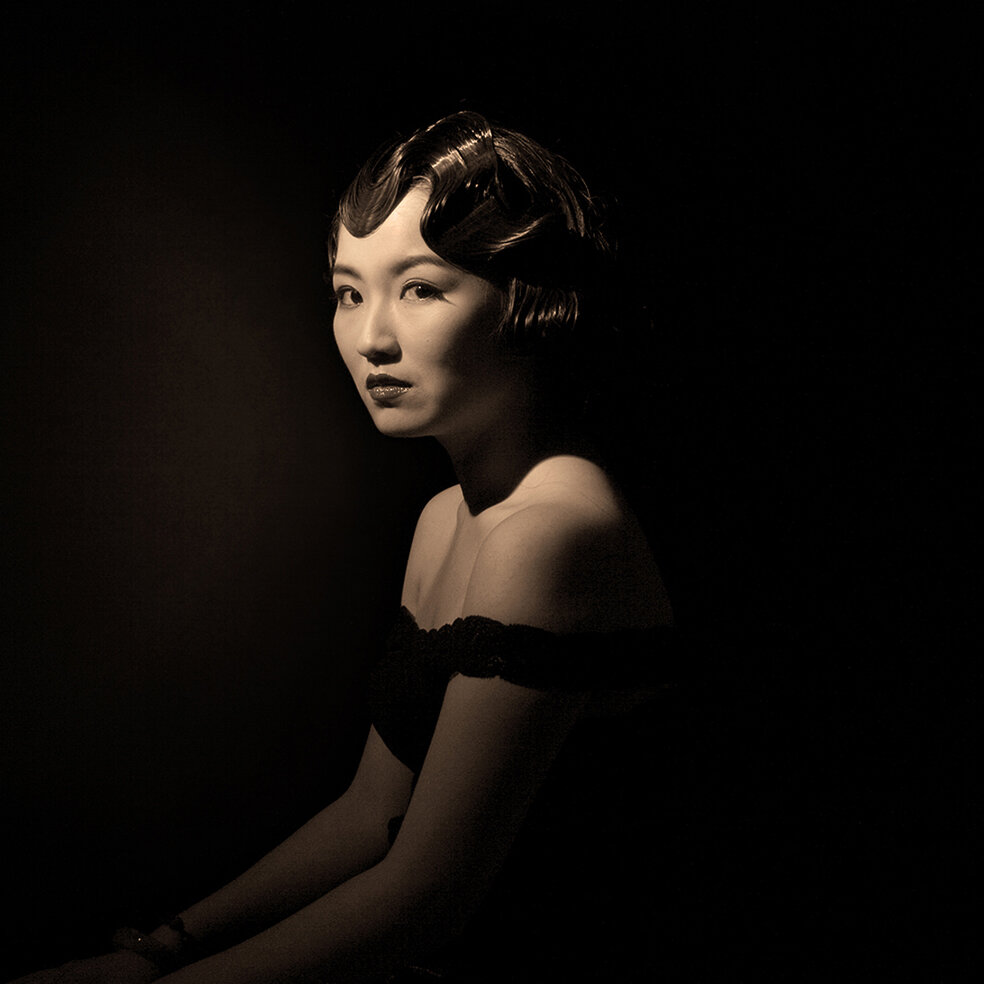China Dolls of Nathalie Daoust
Inside the dark studio, the sole light that illuminates the space zeroes in on the black backdrop before the camera. A woman in a contemporary qipao walks under the glow of the light, the floral and beaded ornaments glistening in her hair, and her appearance casts a façade of someone living by the codes of her culture. Another woman who poses for the shoot displays pink blush on her cheeks while underwater; spotlighting an imagery of someone drowning while embracing a whimsical stillness in her expression. The next woman strolls to the same spot in her black, off-shoulder dress and 1920s hairstyle, wearing a look of authority and certainty. Each narrative varies, but the transition of reawakening from one’s culture and traditions pervades, and behind these chronicles of unbecoming, the one who holds the camera, Nathalie Daoust, leads the retelling.
In Chinese culture, the dominance of its patriarchy favors the male sex to retain its monopoly on household responsibilities as part of the family’s pride, abundance, and conformity towards social representations. Before being abolished in 2015, China's one-child policy—in its inception, a massive effort towards systematic birth control—had the unexpected effect of drastically skewing the population's sex ratio to favor men with the tacit assumption of women's inferiority. In the traditional perspective, the women, as first-born or only child, would remain insignificant compared to men, treating them as undesirable as a result of their gender.
“Discrimination against women, in particular in childhood, which is the result of their less valued status, poses an important challenge for the Chinese authorities from an individual point of view, with regard to the respect of their rights and accession to greater equality between the sexes,” writes Isabelle Attané, a demographer and sinologist at the National Institute of Demographic Studies, in her study on Being a Woman in China Today: A Demography of Gender. “In tandem with undeniable advances in their access to education, women suffer from growing insecurity in the field of employment, as a result of both the reduction in the jobs available to them and the growing inequalities between men and women’s salaries. Within the couple, although relationships between husband and wife remain centred on marriage and reproduction, women often remain dependent on men, both at economic level and as regards decision-making.”
Through China Dolls, Nathalie Daoust has unveiled the fragility of female identity in contemporary China as a series of photographs during her residency at the Red Gate Gallery in Beijing, China. The portraits of women defy the patriarchy that has permeated the nation’s culture, stepping into their realization that they possess control over their destiny and self-identification. The passive equilibrium in gender power falls through; the creeping alignment of women as individuals with equal rights in China’s society ensues.
China Dolls comprises hand-colored and printed portraits in black and white on more than 200 ceramic tiles sprawled across the gallery, including eight large-scale portraits to accompany the over-a-hundred individual portraits placed on the gallery’s floor. The experience immerses visitors who may walk over the collection to witness the revolt of the women, whose wisdom and power strengthen at a gradual pace.
The unspoken through photographs, the shift through symbolisms, and the culture on the verge of questioning. The awakening of women in China’s culture; the domain of rights, power and community in everyone’s hands regardless of status, gender and position. Nathalie Daoust and her prowess in photography document a new history in China’s society.
Words: Matthew Burgos




